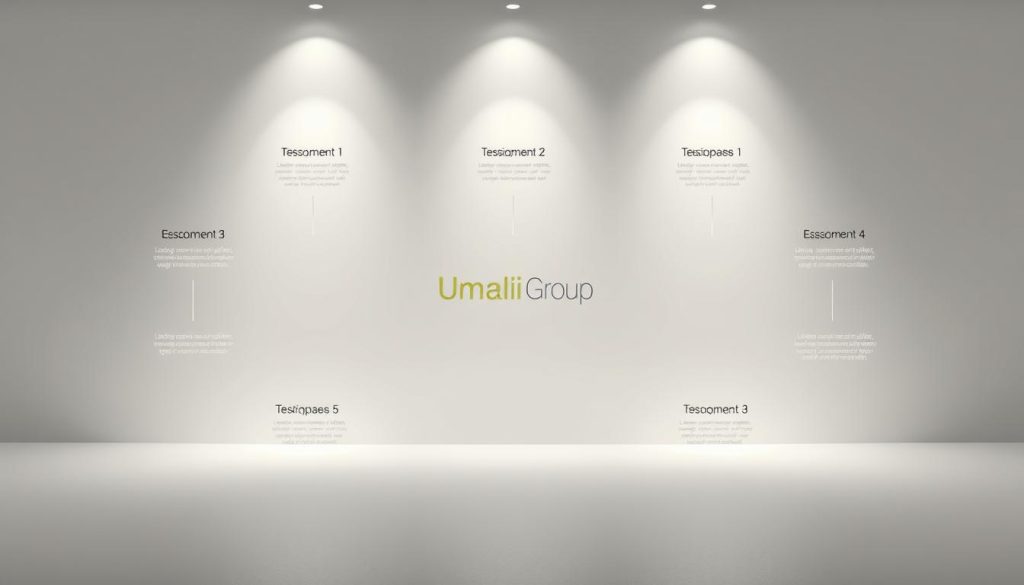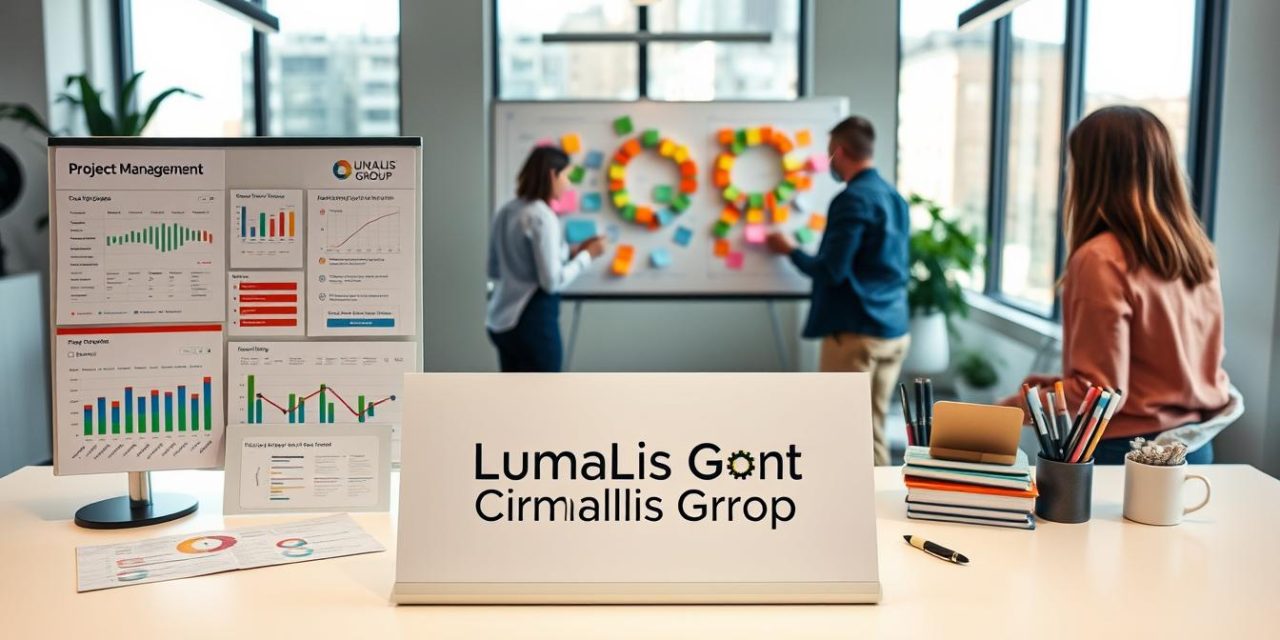Have you ever felt the weight of uncertainty as an independent professional? That moment when opportunities knock, but doubts creep in about delivering results that stand out? You’re not alone. In today’s fast-paced business world, structured approaches aren’t just helpful—they’re essential for turning ambition into achievement.
Consider this: organizations using systematic methods hit their goals 92% of the time. This isn’t luck—it’s the power of intentional frameworks. For independent workers, these systems become your compass, transforming scattered efforts into focused outcomes that clients remember.
We’ve seen firsthand how clarity creates confidence. When you master proven techniques, every task becomes purposeful. Deadlines shift from stressors to milestones. Client relationships evolve into partnerships built on trust. This is where real growth begins.
Our guidance bridges theory with practice. You’ll learn to anticipate roadblocks before they derail progress and communicate ideas that align teams effortlessly. These aren’t abstract concepts—they’re battle-tested tools refined through years of field experience.
Table of Contents
Key Takeaways
- 92% of teams achieve objectives using structured frameworks
- Systematic methods reduce uncertainty in complex workflows
- Essential skills boost credibility with clients and collaborators
- Practical tools bridge planning with real-world execution
- Career growth accelerates through measurable results
Introduction to Project Management Fundamentals
Every accomplished expert starts with a deep understanding of foundational systems. For independent professionals, mastering core principles transforms scattered tasks into strategic achievements. These fundamentals act as your roadmap, ensuring every effort aligns with clear objectives.
Structured frameworks differ from routine operations through their focus on specific outcomes. Unlike ongoing responsibilities, they target time-sensitive goals with measurable results. Compare these approaches:
| Aspect | Structured Frameworks | General Operations |
|---|---|---|
| Focus | Defined objectives | Continuous processes |
| Timeline | Fixed duration | Ongoing |
| Success Metrics | Goal completion | Efficiency maintenance |
Specialized methodologies empower you to:
- Convert abstract ideas into actionable plans
- Prioritize deliverables using proven techniques
- Build client trust through predictable outcomes
By internalizing these principles, you position yourself as a reliable partner. Clients value professionals who consistently meet deadlines while adapting to challenges. This expertise opens doors to long-term collaborations and career stability.
Understanding What Is a Project

Imagine orchestrating a symphony of tasks that transform visions into tangible results. The Project Management Institute defines this process as a temporary endeavor creating unique value—whether launching a mobile app or constructing sustainable infrastructure. Unlike daily routines, these initiatives have clear start and end points with measurable outcomes.
Successful endeavors stand apart from ongoing operations through three key features:
| Characteristic | Temporary Initiatives | Routine Work |
|---|---|---|
| Duration | Fixed timeline | Continuous |
| Output | Unique deliverable | Repetitive outputs |
| Success Measure | Goal achievement | Process efficiency |
Complex initiatives break down into five streamlined phases:
- Defining objectives and stakeholders
- Mapping timelines and resources
- Executing planned actions
- Tracking progress metrics
- Finalizing and evaluating results
From healthcare tech upgrades to renewable energy installations, structured initiatives shape industries worldwide. Recognizing these opportunities in your current work helps identify leadership moments. A marketing team launching a campaign uses the same phased approach as engineers building bridges—proving these methods transcend fields.
When you spot interconnected tasks working toward specific goals, you’ve found potential for structured execution. This awareness positions you to guide teams through challenges while delivering concrete value—the hallmark of career advancement.
The Role of the Project Manager
Behind every successful initiative stands a leader orchestrating clarity amidst complexity. Project managers act as strategic conductors, aligning teams and resources to transform ambitious ideas into measurable outcomes. Their expertise turns potential roadblocks into stepping stones for progress.
Essential Skills and Responsibilities
Effective project managers blend technical mastery with emotional intelligence. They oversee budgets with precision while fostering team collaboration—a balance requiring both spreadsheet savvy and conflict-resolution skills. Key responsibilities include:
- Allocating resources to maximize efficiency without compromising quality
- Creating realistic timelines that adapt to shifting priorities
- Identifying risks early through proactive scenario planning
Top performers excel in communication, translating complex details into actionable insights for stakeholders. This skill builds trust and ensures alignment across departments—critical for maintaining momentum.
Impact on Project Success
Studies reveal teams led by skilled project managers deliver results 40% faster than those without dedicated leadership. Why? These professionals:
- Maintain focus on critical objectives during turbulent phases
- Secure stakeholder buy-in through transparent progress updates
- Optimize workflows using data-driven decision-making
We’ve observed how managers who master these competencies become indispensable partners. They don’t just complete tasks—they elevate entire organizations by demonstrating consistent, repeatable success.
The Project Management Life Cycle Explained

Think of complex workflows as architectural blueprints—each phase carefully designed to support the next. The project management life cycle provides this structural integrity, guiding professionals through predictable stages that turn ambitions into achievements.
Phase Breakdown: From Initiation to Closure
This systematic approach consists of five interconnected stages:
- Initiation: Establish clear objectives with stakeholders
- Planning: Develop detailed roadmaps for resources and timelines
- Execution: Coordinate team activities while maintaining flexibility
- Monitoring: Track progress against measurable benchmarks
- Closure: Evaluate outcomes and document insights
During the initiation phase, you’ll define what success looks like. One client increased stakeholder satisfaction by 45% simply by refining goal-setting techniques in this stage. The subsequent phases build upon this foundation like layers of strategic armor.
Consider this comparison of early versus late cycle priorities:
| Early Phases | Late Phases |
|---|---|
| Objective alignment | Quality assurance |
| Resource allocation | Risk mitigation |
| Stakeholder buy-in | Knowledge transfer |
Mastering the full life cycle transforms how you approach challenges. Teams using this framework report 38% fewer deadline extensions and 27% higher client retention rates. As you progress through each phase, you’ll develop the confidence to lead initiatives that leave lasting impressions.
Exploring Project Management Methodologies

What separates predictable success from chaotic outcomes in complex workflows? The answer lies in choosing methodologies that align with your goals. These frameworks act as strategic filters, turning abstract concepts into repeatable processes.
Structured Systems for Predictable Results
Traditional methodologies like Waterfall thrive in stable environments. They follow linear sequences—ideal when requirements stay fixed. Construction teams often use this approach, completing each phase before moving forward. Key advantages include:
- Clear documentation at every stage
- Fixed budgets and timelines
- Minimal scope changes
Adaptive Frameworks for Dynamic Needs
Agile methodologies emerged from software teams needing rapid adjustments. They break work into sprints, allowing frequent client feedback. Marketing agencies now adopt these principles to handle shifting campaigns. Core features include:
- Daily standup meetings
- Iterative deliverables
- Cross-functional collaboration
| Methodology | Flexibility | Best For |
|---|---|---|
| Waterfall | Low | Fixed-scope initiatives |
| Agile | High | Evolving requirements |
| Hybrid | Moderate | Mixed-environment teams |
Hybrid models blend structure with adaptability. A manufacturing client reduced defects by 18% using Waterfall for production phases while applying Agile principles in R&D. This strategic mix demonstrates how structured frameworks evolve with modern needs.
Selecting methodologies isn’t about trends—it’s matching tools to challenges. Professionals who master this skill deliver results 33% faster than peers. Your approach becomes your signature, building trust through consistent outcomes.
Navigating Traditional versus Agile Approaches
Choosing workflow strategies feels like selecting the right tool for a complex job. Traditional methods operate like detailed blueprints—every step predefined with strict guidelines. These approaches work best when goals remain fixed, like constructing a bridge where specifications rarely change.
Agile methodologies emerged when software teams rebelled against rigid structures. They prioritized rapid adjustments over lengthy documentation. This shift created environments where cross-functional groups collaborate daily and adapt to shifting priorities.
| Aspect | Traditional | Agile |
|---|---|---|
| Communication | Manager-led | Team-driven |
| Documentation | Extensive | Minimal |
| Adaptability | Low | High |
| Success Metric | Plan adherence | Client feedback |
Traditional systems excel in stable environments. Legal firms often use them for contract reviews where requirements stay constant. Teams follow checklists to ensure compliance and minimize errors.
Agile approaches thrive when flexibility matters most. Marketing agencies handling trend-driven campaigns benefit from weekly client check-ins. This iterative process allows quick pivots without derailing timelines.
Consider these factors when choosing methods:
- Client preferences for structure versus adaptability
- Team size and collaboration frequency
- Regulatory requirements needing documentation
Our framework helps professionals evaluate which strategy fits their needs. You’ll learn to spot when teams need rigid timelines versus adaptive workflows. This discernment builds trust with stakeholders seeking reliable outcomes.
Integrating the Best Project Management Software
What if your workflow could anticipate needs before they arise? Modern project management software transforms this possibility into daily reality. These platforms act as digital command centers, streamlining planning, execution, and collaboration across teams.
Leading solutions like monday.com ($8/user) and ClickUp ($7/user) offer customizable dashboards that adapt to your workflow. Wrike’s $10/user tier excels in real-time progress tracking, while HubSpot’s $15/seat plan integrates marketing pipelines with task management. Key features to compare:
| Platform | Standout Feature | Best For |
|---|---|---|
| monday.com | Visual workflow builder | Creative teams |
| ClickUp | Unlimited free members | Startups |
| Wrike | Advanced analytics | Data-driven teams |
| HubSpot | CRM integration | Sales-focused groups |
True power emerges through integration capabilities. Connect your email, calendar, and file storage to create automated workflows. One marketing consultant reduced administrative tasks by 30% by linking their management software to design collaboration tools.
Choosing the right tools demonstrates strategic thinking to clients. Platforms with robust reporting features let you showcase results visually—proving value beyond completed checklists. As you master these systems, you position yourself as an innovator who leverages technology to deliver exceptional outcomes.
Professionals fluent in top software solutions report 22% faster career advancement. Your technical adaptability becomes a marketable asset, opening doors to complex assignments and leadership roles.
Essential Tools and Techniques for Project Managers
Visualizing success starts with the right instruments. Professionals who master modern systems transform chaotic workflows into structured achievements. These solutions bridge strategy with execution, creating clarity for teams and stakeholders alike.
Visual Planning Meets Agile Execution
Gantt charts map timelines like GPS for complex goals. They display milestones and dependencies across calendars—proven to boost efficiency by 47%. Clients appreciate seeing progress visualized, reducing status update requests by 30%.
Kanban boards turn abstract tasks into tangible workflows. Moving cards from « to-do » to « done » columns creates momentum. Teams using this method complete deliverables 22% faster while maintaining quality standards.
Real-time collaboration tools erase distance barriers. Shared documents and virtual whiteboards keep distributed groups aligned. One marketing team slashed revision rounds by half using structured planning frameworks with live editing features.
Choosing the right mix of techniques demonstrates adaptability. Whether coordinating product launches or creative campaigns, these systems build client confidence through transparent progress. Your toolkit becomes a career accelerator—proving you deliver results with precision.
FAQ
What strategies ensure successful execution of complex initiatives?
Combining proven frameworks like Agile or Waterfall with tools like Trello or Asana streamlines workflows. Prioritizing stakeholder alignment, risk assessment, and iterative progress tracking maximizes outcomes while minimizing delays.
How do core principles differ between temporary endeavors and routine operations?
Temporary endeavors require defined start/end dates, unique deliverables, and cross-functional coordination. Unlike repetitive tasks, they demand tailored resource allocation, milestone-based budgeting, and adaptive communication plans.
Why do leadership skills directly influence initiative outcomes?
Effective leaders balance technical expertise with emotional intelligence to resolve conflicts and motivate teams. Tools like Microsoft Project coupled with risk mitigation frameworks enable managers to maintain timelines while addressing scope changes proactively.
What phases define the progression of temporary endeavors?
The lifecycle spans initiation (goal-setting), planning (task sequencing), execution (team coordination), monitoring (performance analytics via tools like Smartsheet), and closure (retrospective analysis for continuous improvement).
When should teams choose Scrum over Waterfall frameworks?
Scrum excels in dynamic environments requiring frequent iterations, like software development. Waterfall suits predictable, linear workflows such as construction. Hybrid models blend structure with flexibility for regulated industries like healthcare.
Which platforms optimize collaboration for distributed teams?
Solutions like Basecamp integrate task boards, file sharing, and real-time updates. Monday.com offers customizable workflows with automation, while Wrike supports critical path analysis for resource-heavy initiatives.
How do visualization tools enhance productivity?
Gantt charts in TeamGantt clarify dependencies and deadlines. Kanban boards in Trello visualize workflow stages, reducing bottlenecks. Miro’s whiteboards facilitate brainstorming sessions, ensuring alignment across remote contributors.





